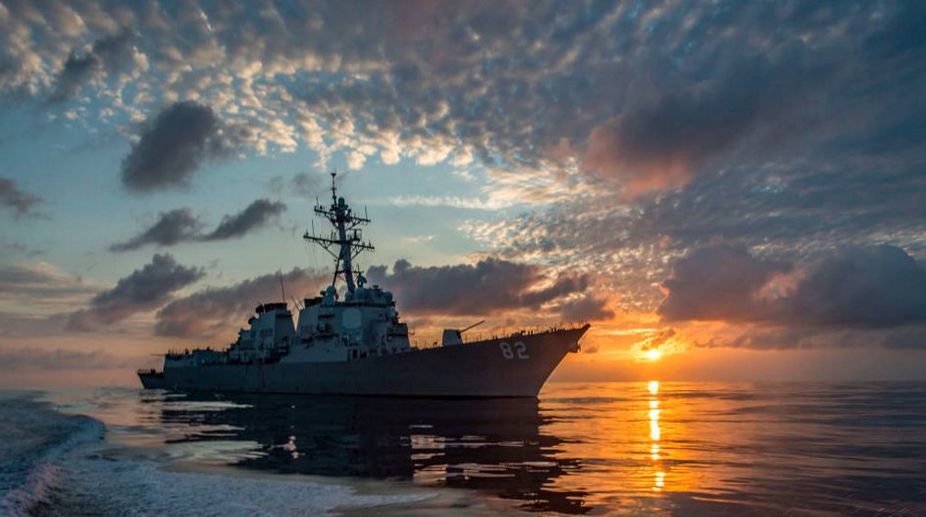In 1986, the then Philippines President Corazon Aquino met with China’s paramount leader Deng Xiaoping to discuss the South China Sea issue. Deng talked to Aquino, as he told some other Asian leaders at that time, and told her “Madam President our generation might not be wise enough to decide the territorial dispute but there are a lot more areas of South China Sea we may discuss without discussing the territorial claims.”
The current Philippine Foreign Secretary Alan Peter Cayetano referred to Deng’s words to justify his government’s
soft approach toward China on the contentious South China Sea issue, during a conversation with Asean journalists in Manila recently.
The stance taken by the Philippines under leader of President Rodrigo Duterte these days is totally different from what Aquino’s son Benigno Aquino III did against China when he was running the country from 2010-2016.
While Aquino III took the conflict to a Hague-based arbitral tribunal constituted under the UN Convention
on the Law of the Sea and won an award in July last year, successor Duterte, who took office only a few weeks after that ruling, said he would keep the award and might use it when it is necessary. But, for now, he employs a different approach while dealing with China on a bilateral basis.
Under Duterte, a tentative fishing agreement has been put up, “so Filipino fishermen are allowed to fish in the area where we believe is our traditional fishing area,” Cayetano said.
“China gave verbal assurance that they will not build any more facilities in Scarborough shoal. So, we believe the
current strategy – without judging the past strategy – is now working,” he said.
The Philippines and China, as proposed by Chinese foreign minister Wang Yi during his visit to Manila recently, agreed to conduct joint exploration for oil and gas in the contentious sea.
“We have to do this, I mean (if we continue the old approach) we might be fighting over nothing in terms of natural resources, but if we find a way to look at how much resources are there, maybe our generation is wiser to say this is better than no one can benefit from this and confront each other,” he said.
Members of Asean, including Vietnam, Malaysia and Brunei, have been at loggerheads with China over territorial disputes for decades. While China has consistently insisted on dealing with contesting parties on a bilateral basis, many Asean members, notably Vietnam, want the group to speak on the issue in one voice, although they realise that
territorial disputes can never be solved multilaterally.
Vietnam, which is not a party to the arbitral award although many officials in Hanoi have said that they have thought about having one, wanted to see Philippines implement the award which rejects China’s historical right over the disputed areas.
Prior to a ministerial meeting in Manila, Vietnam urged Asean countries to unite in the settlement of disputes in the South China Sea, emphasising the importance of completing a binding code of conduct, based on international law, including the tribunal’s award.
While analysts have noted the active role of Vietnam in mobilising Asean leaders to balance the Chinese influence on the matter, the outcome of the ministerial meeting last week on the South China Sea was not so impressive due to the soft approach of Philippines, which holds the Asean Chair at the moment, and counterproductive moves by some members.
The joint communique issued a bit late after the meeting refrained from using any ‘strong’ word on the militarisation in the contentious sea. It simply says “we emphasised the importance of non-militarisation and self-restraint in the conduct of all activities by claimants and all other states.”
For the Philippines, China and many diplomats, such a statement is enough given the fact that foreign ministers of the group and China on August 6 adopted a framework for the code of conduct in the South China Sea.
Without unity among Asean members, however, analysts doubt whether the code of conduct, if indeed it is agreed upon in future, will be meaningful in resolving conflicts.
Indeed, Asean and China signed in 2002 a non-binding Declaration on the Conduct of Parties in the South China Sea (DOC). But the document failed to prevent conflicts, as most of the claimants, notably China, built facilities on islands and features in the sea, which facilitated militarisation.
The framework of the code of conduct as leaked to media addressed nothing different from the general principle seen in the 1982 United Nations Convention on the Law of the Sea (UNCLOS), which the Asean DOC also referred to.
While many Asean members, including the Philippines and Vietnam, wished to see a legally binding code of conduct to control the behaviour of countries in the sea, the difference between binding and non-binding is not clear.
Non-binding could become binding if contracting parties are willing to implement such an agreement, while a binding pact could become a nonbinding one if parties do not enforce it.
Similar anomalies exist elsewhere.
Take the UNCLOS for example. The United States has not signed in the convention but now champions it. While China, which ratified it in 1996, acts like it does not exist. The Philippines won the arbitral award but shelves it while Vietnam, which is not a party in the case, actively calls all parties to comply.
A major challenge for the group, which adopted with China a framework to establish the code of conduct last Sunday in Manila, is how to make the new document relevant.
If the history of DOC is a guide, officials will begin, in November, to waste their time in drafting the text of the code for nothing.
(The writer is Regional Editor, The Nation, Thailand. This is a series of columns on global affairs written by top editors and columnists from members of the Asia News Network and published in newspapers and websites across
the region.)











